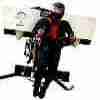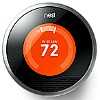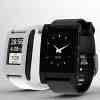Future Technology

Future technology is going to dramatically change how we watch and interact with our televisions.
Smart TV is coming soon. A big screen, fully integrated computer system with the same technology that enables our favorite devices.
This will enable viewers to access all multimedia content - broadcast, satellite, internet, and social media. Smart TV's will be web-enhanced with apps similar to smartphones, unlimited streaming, and full integration with multiple devices.
Smart TV's are in early development stages but future technology will allow consumers to customize their television experience.
There will be search capabilities and you can watch whatever you want, whenever you want. You will be able to control camera feeds and choose camera angles for sports, concerts and other entertainment events.
You'll be able to interact with advertisements, order product, share programs, create entertainment, access social networks, and multi-task/integrate seamlessly with any application on any of your devices.
Television commercial advertising will follow the successful publishing model on the Internet. Advertisers will pay only for response (clicks) or cost per impressions (cpm).
This model encourages free tv shows and free movies online in order to maximize the number of viewers.
Free tv shows and free movies online will be produced to target virtually every interest imaginable so advertisers can reach a specific demographic audience.
All of this entertainment will be searchable on your browser so you can watch specifically what interests you, when you want.
Read More... Smart TV
Source:swissstyle.com; sun-times media
Maple Electric
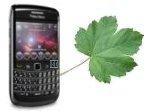 Our future technology could be powered by an unusual source of energy.
Our future technology could be powered by an unusual source of energy.
Research by scientists at the University of Washington have discovered more good reasons to hug trees.
The bioelectric properties of trees are a natural source of energy to power electronic circuits. This source of power could be used to recharge our gadgets.
Small amounts of voltage are generated in trees but a voltage booster designed at the University generated a 1.1 volt from maple trees.
Because of the constant advances in electronics our smart phones require less and less power, so the voltage from trees is now a viable source for recharging our batteries.
Source: wireless.ee.washington.edu
Breath Like A Fish
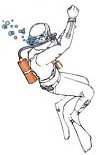 Future technology may allow us to breath underwater like fish.
Future technology may allow us to breath underwater like fish.
Alan Izhar-Bodner has invented an apparatus that extracts the air out of water for breathing.
Seawater contains 1.5 to 2.5% air, 34% of which is oxygen. Air can be dissolved in water by increasing pressure and released when that pressure is decreased.
This is known as "Henry's Law".
By using a centrifuge, Bodner's invention separates air from water and transfers it to a container that can be used as a source of oxygen for a diver.
The technology can also be used for submarines and underwater habitats utilizing the oxygen in the water instead of replenishing air from the surface.
Source: likeafish.biz
Steam Engine
Invented by Harry Schoell, the Cyclone engine is a modern day steam engine with future technology that is in the final stages of development.
The engine creates super-heated steam that enters six cylinders at pressures up to 3200 psi to push pistons.
There is no motor oil used in this process.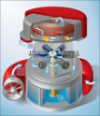 The steam escapes the cylinders through exhaust ports to a condensing unit where it is converted back into water.
The steam escapes the cylinders through exhaust ports to a condensing unit where it is converted back into water.
It's a closed-loop system so water never needs to be replaced and the steam is constant.
The Cyclone creates steam from heat derived by burning fuel in an external chamber. Anything that can be ignited to create sufficient heat can be used as fuel.
Orange peels, palm oil, cottonseed oil, algae, kitchen grease, biofuels, as well as fossils can all be used without any modifications.
Source: cyclonepower.com
Gen H-4 Copter
Gennai Yanagisawa has invented the world's smallest one-man helicopter.
 The GEN H-4 is a 75 kg (165 lbs) aluminum-framed copter with twin rotors powered by two 10hp engines.
The GEN H-4 is a 75 kg (165 lbs) aluminum-framed copter with twin rotors powered by two 10hp engines.
Each engine has independent ignition, a carburetor, starter and clutch. It can fly with just one engine so the probability of total engine failure is remote. But for added safety, it also comes with a ballistic parachute.
To fly the copter, you take a seat and grab the control bar that is positioned in front of you. The handle bar displays a tachometer, starter and throttle lever.
To fly forward you pull the handle bar towards you. To go backwards you push the handle forward. Move the handle left to fly right and right to fly left. The throttle lever controls the rise and descent. The maximum flight speed is 50 kilometers per hour ( 31 mph).
Yanagisawa is planning a trip to Italy to fly his new invention. It is to honor the inventor Leonardo da Vinci who was the first person to envision the invention of helicopters.
Source: gen-corp.jp





